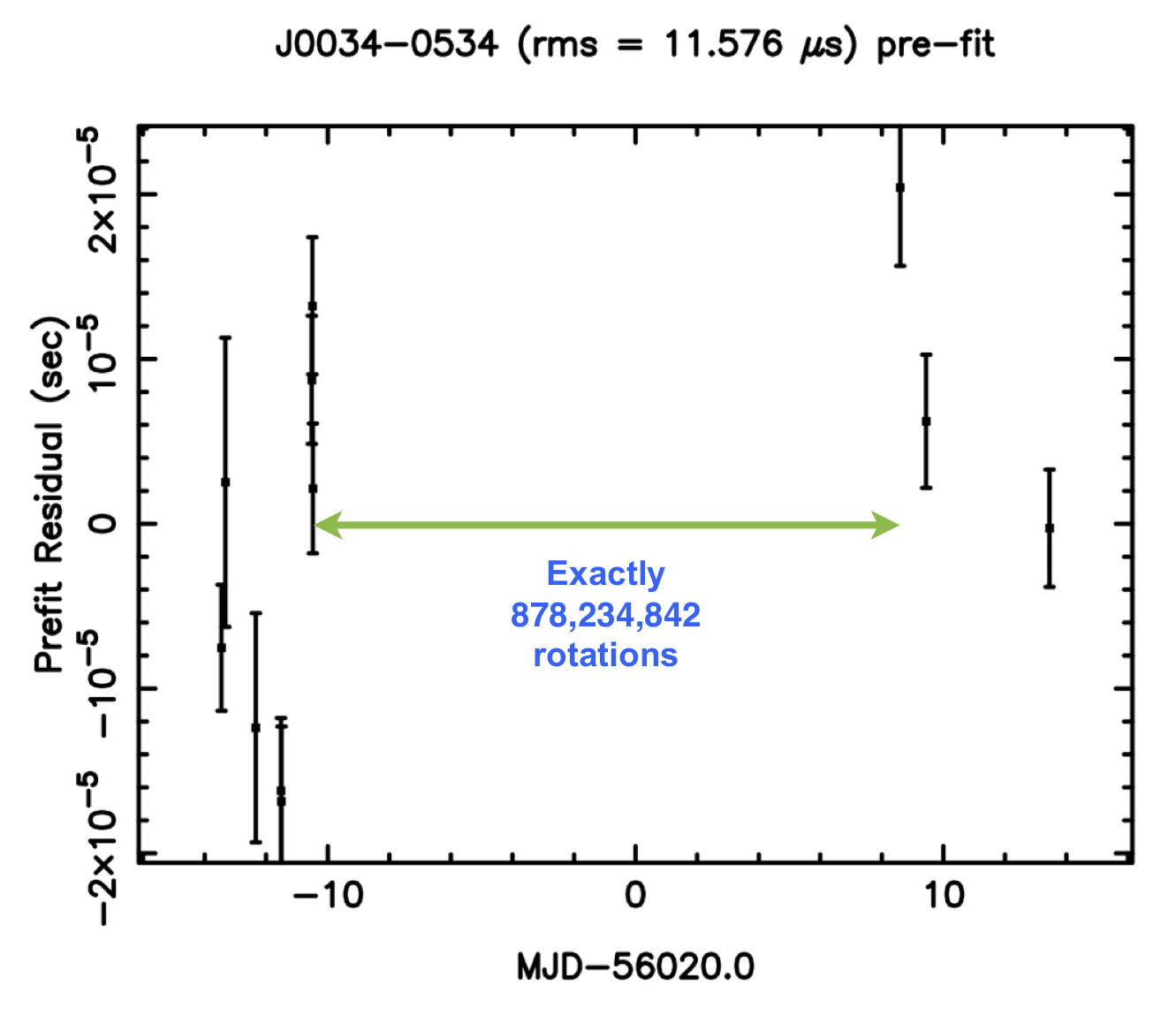Daily Image
09-05-2012First Glimpse at LOFAR's High-Precision Pulsar Timing Capabilities
| Submitter: | Joris Verbiest, Jason Hessels, and Ben Stappers on behalf of the LOFAR Pulsar Working Group |
| Description: | Pulsar timing is the process of measuring a collection of pulse arrival times and then fitting these to a model that describes the astrometric, spin, and orbital properties of the pulsar. The technique literally accounts for every single rotation of the pulsar over the course of months to years, enabling precise derivations of, e.g., the spin-down rate. In the case of millisecond pulsars (MSPs), this precision is taken to an extreme and it is being exploited to use MSPs as the lever arms of a Galactic-scale gravitational wave interferometer. We have recently demonstrated the power of LOFAR for observing MSPs at very low frequency (LOFAR MSPs Daily Image). Even more recently, during Pulsar Busy Week #16 (March 19-23), we started a campaign to time PSR J0034-0534. This Daily Image shows the "timing residuals" of the measured LOFAR times of arrival compared with the timing model, over the course of several weeks. This seemingly unremarkable scattering of points is actually great news for us because it shows that with the current LOFAR data we are easily able to account for every rotation of this source. In general, low radio frequencies are not ideal for ultra-precise pulsar timing - like that needed to detect gravitational waves. This is because there are steep frequency-dependent effects caused by propagation of the signal through the interstellar medium (e.g. dispersion and scattering). However, LOFAR can detect propagation effects too subtle to be easily seen at higher radio frequencies, but which still affect timing at the precision necessary to detect gravitational waves (at the 100-ns level). We plan to use the timing information gathered with LOFAR (e.g. dispersion measure variations) to improve the precision with which pulsars can be timed at higher frequencies, with the primary goal of increasing the sensitivity of pulsar timing arrays to gravitational waves. |
| Copyright: | JPWV/JWTH |
| Tweet |  |
